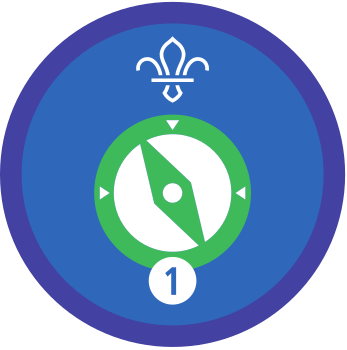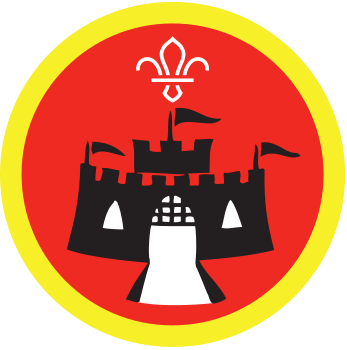
Play map symbol bingo
You’ll need
- Pens or pencils
- Copies of the map symbol bingo sheets
- Bag or bowl for tokens
- Bag or bowl for calling cards
Before you begin
- Use the safety checklist to help you plan and risk assess your activity. Additional help to carry out your risk assessment, including examples can be found here. Don’t forget to make sure all young people and adults involved in the activity know how to take part safely.
- Make sure you’ll have enough adult helpers. You may need some parents and carers to help if you’re short on helpers.
Setting up this activity
- Print out copies of the bingo cards and the calling cards before running this activity. You'll need to cut them out.
- Put all the calling cards in a bag, or fold them up and place them in a bowl.
- If you want to play this game multiple times, you could laminate the cards and use tokens to cover any symbols that are called out, rather than using a pen to tick them off. You could also use whiteboard pens on laminated cards.
- You may want to have prizes for a line, two lines or full house.
- Remind people it’s about taking part, cheering each other on and having fun, not about winning.
Play the game
- Tell everyone you're going to play a game of bingo learn about map symbols. For younger groups, you could ask if anyone can describe any map symbols they already know or what we might find on a map.
- Hand out the cards or pens to each person, however you may want to play in pairs or small groups.
- A bowl or bag should have pieces of paper in, with each one having a map symbol on it that’ll match a symbol on some of the cards.
- Someone will pick out folded pieces of paper from a bag or bowl, then call out what it is. You could hold up each piece of paper as it’s called to help people recognise the symbols.
- When the symbols are called out, everyone should check their card. If the symbol is on their card then they can tick it off or place a token on it.
- In bingo, you normally play for one line, two lines and full house.
- To play for one line, if people tick off all the symbols in a row, or in a horizontal line, then they can shout ‘Bingo!’
- To play for two lines, if people tick off all the symbols in two rows, or in two horizontal lines, then they can shout ‘Bingo!’
- Finally, to play for a ‘full house’, if people tick off all the symbols on their card, they can shout ‘Bingo!’.
Winning the game
- As each ‘Bingo!’ is called, someone should check the cards to make sure it’s been called correctly.
- You may want to give prizes for when ‘Bingo’ is called, but you could also reward teamwork or being a good player to others and cheering them on.
- At the end, you could ask people to swap cards and play again. To play again, if you’re using pens to tick off the symbols, people could tick them in a different way or direction for each game. They could also use different coloured pens. If you’re using tokens, these can just be removed.
Reflection
This activity was all about map symbols. Did anyone recognise any of the map symbols? Which of the symbols were easy to recognise? Which of them were trickier or harder to identify? Did any not look anything like what they were meant to be?
Map symbols can be really useful. Why do you think map symbols are important? How might they help us? Is there anywhere else these symbols might be used or where else might you have seen them? You often get symbols similar to map symbols on road signs.
Why do you think people use these map symbols on other things? They’re well known and people can easily recognise them.
We played bingo to learn about the symbols. What was that like? Was it fun? Was it easy or hard? Did anyone get a line or full house? What was it like waiting for your symbols to be called? What was it like being patient?
Sometimes in bingo people may win before us at the last minute, because bingo is often random and we can’t control what happens next. Did you get really close, with only a couple left, but someone else’s symbol came up first, so they won? How did that feel? How did you manage those feelings? How can we apply this to other areas in our lives?
Safety
All activities must be safely managed. You must complete a thorough risk assessment and take appropriate steps to reduce risk. Use the safety checklist to help you plan and risk assess your activity. Always get approval for the activity, and have suitable supervision and an InTouch process.
- Scissors
Supervise young people appropriately when they’re using scissors. Store all sharp objects securely, out of the reach of young people.
- To make this activity easier, people could work in pairs or teams.
- To make this activity harder, you could call out the map symbol name, without showing people the picture on the calling card to see if they recognise the symbol.
- Some people may not be able to sit down for a long amount of time. Try to build movement breaks into your activities to help people who may struggling sitting or staying quiet for long periods. Some people may also work better sat on the floor, sat on a cushion or led down.
- You may want to make the cards easier for everyone to pick up and handle the items, such as by printing on thicker paper or sticking the cards onto thicker card.
- Enlarge the bingo card, if needed, so everyone can see or read them.
- People could work in pairs or small groups to support each other, especially if some people may struggle to tick off the card, place tokens or recognise the symbols. A young leader or volunteer could join the group to help them too.
- Some people may find these activities noisy, especially if the space echoes. You could have a noise level warning system to help everyone be reminded of the noise levels. The person could wear ear defenders, or you could run the game over a larger space to reduce the noise. Shutting doors and windows can help to reduce external sounds if you're indoors. If people are sensitive to noise, instead of shouting out ‘Bingo!’, people could put their hand up to show they’ve got a line or full house.
All Scout activities should be inclusive and accessible.
If you enjoyed this game, why not try some other map related activities?
A young person could take on the role of ‘caller’ for this game, and they could choose the cards from a bag or bowl.

